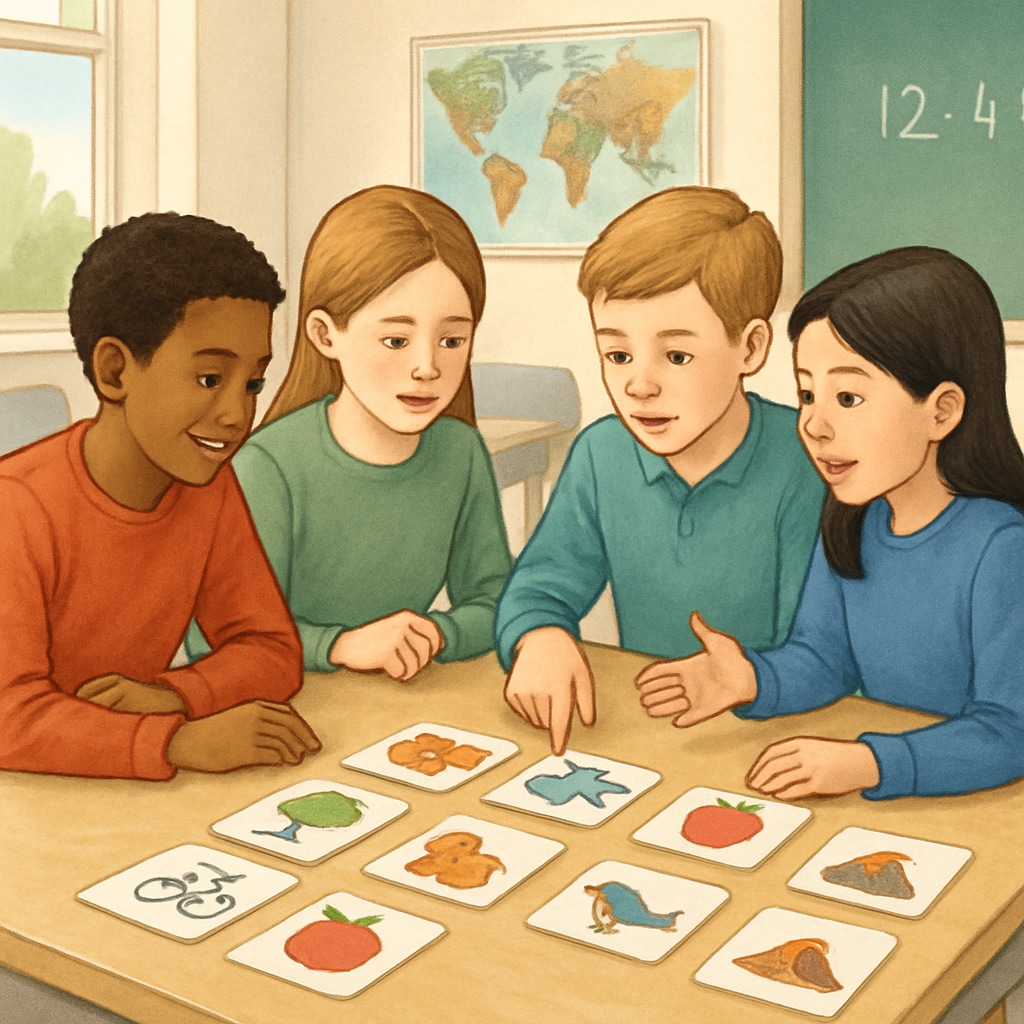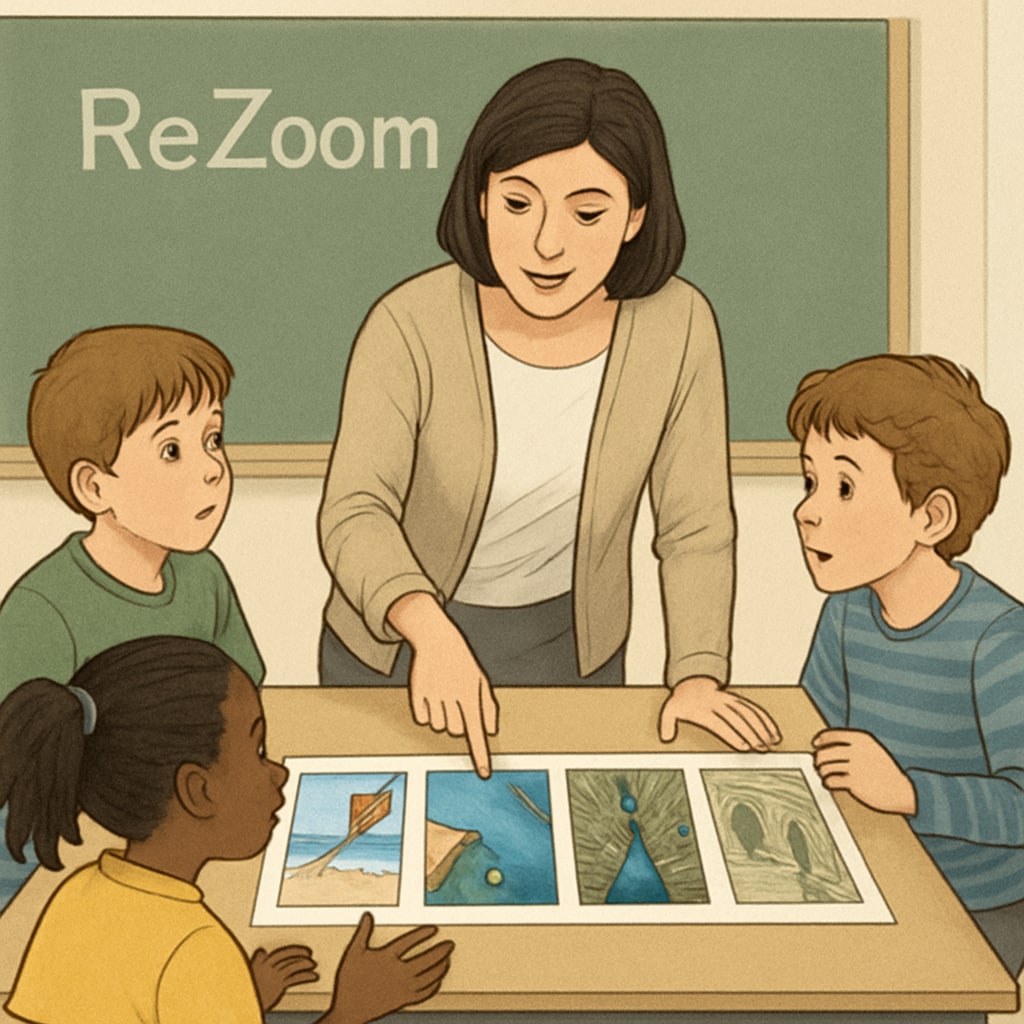Zoom and ReZoom teaching activities are innovative tools designed to develop students’ visual thinking, logical reasoning, and teamwork skills. While these activities lack standard answers, they offer educators unique opportunities to foster creativity and collaboration. This comprehensive guide explores how to implement Zoom and ReZoom teaching activities effectively and provides strategies to uncover insights, even without predefined solutions.
What Are Zoom and ReZoom Activities?
Zoom and ReZoom are interactive teaching tools introduced by Istvan Banyai. Each activity consists of a series of interconnected illustrations that participants must arrange in sequential order. The Zoom activity starts with a close-up image that gradually zooms out, revealing a larger context. ReZoom follows a similar concept but often involves more complex visual narratives.
These activities are widely used in classrooms to enhance skills such as:
- Visual thinking and spatial awareness
- Logic and problem-solving
- Teamwork and communication
By collaboratively piecing together the sequence, students learn to interpret details, recognize patterns, and think critically.

Steps to Implement Zoom and ReZoom Activities
Implementing Zoom and ReZoom activities requires careful planning to ensure students maximize their learning experience. Follow these steps to get started:
- Prepare the materials: Acquire the Zoom and ReZoom books or printable card versions. Ensure all cards are shuffled to challenge participants.
- Introduce the concept: Explain the objective of the activity. Let students know they must arrange the images in chronological order by observing the details.
- Divide into groups: Split the class into small teams to encourage collaboration. Each group should receive a complete set of cards.
- Facilitate discussion: Encourage students to articulate their reasoning as they arrange the cards. Provide minimal guidance to allow independent problem-solving.
- Reflect and review: After completing the sequence, discuss the process as a class. Highlight the importance of teamwork and visual interpretation skills.
These steps not only help structure the activity but also create a dynamic environment for experiential learning.
Strategies for Finding Answers in Zoom and ReZoom
Since Zoom and ReZoom lack standard solutions, educators must adopt flexible approaches to guide students. Consider the following strategies:
- Focus on context clues: Encourage students to examine each image carefully. Small details like colors, shapes, or recurring elements often provide hints to the correct order.
- Promote collaboration: Group discussions can help students identify patterns and interpret the bigger picture more effectively.
- Encourage trial and error: Remind students that making mistakes is part of the learning process. Rearranging the sequence multiple times can lead to new insights.
- Ask guiding questions: Instead of giving direct answers, pose questions like “What do you think happens next?” or “How does this connect to the previous card?”
These techniques not only enhance problem-solving but also empower students to take ownership of their learning journey.

Benefits of Using Zoom and ReZoom in the Classroom
Incorporating Zoom and ReZoom activities into your teaching repertoire offers numerous benefits:
- Enhances critical thinking: Students learn to analyze details and draw connections between seemingly unrelated elements.
- Fosters creativity: The open-ended nature of these activities encourages imaginative interpretations.
- Improves teamwork: Collaborative problem-solving strengthens communication and interpersonal skills.
- Engages diverse learners: Visual and tactile elements make these activities accessible and enjoyable for students with different learning styles.
As a result, Zoom and ReZoom are not just fun activities—they’re powerful tools for holistic skill development.
Conclusion
Zoom and ReZoom teaching activities are invaluable for cultivating visual thinking, critical reasoning, and collaboration in the classroom. By understanding their principles and employing effective strategies, educators can guide students to uncover answers and enhance their problem-solving abilities. Whether you’re a seasoned teacher or new to these activities, incorporating them into your lesson plans will undoubtedly enrich your students’ learning experience.
For more information on visual thinking and teaching strategies, visit authoritative resources such as Visual Thinking on Wikipedia and Education on Britannica.


